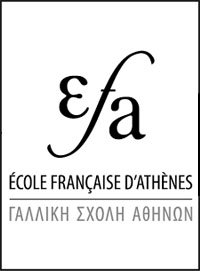Sissi - 2023
Informations Générales
Numéro de la notice
19647
Année de l'opération
2023
Chronologie
Mots-clés
Nature de l'opération
Institution(s)
Localisation
Toponyme
Sision, Kato Sisi
Sision, Kato Sisi
Notices et opérations liées
Description
Sisi. Jan Driessen (UC Louvain) reports on the twelfth excavation campaign at Sissi, under the auspices of the EBSA and the Hellenic Ministry of Culture (ID19647), which focused on the exploration of the Neopalatial Court Building uncovered at the site to clarify the various architectural sequences in the area.
In the Court Building a succession of four different floors was revealed in the Central Court, with only the last Neopalatial phase consisting of a hard tarazza floor. Furthermore, the architectural sequence (Space 6.17) was revealed to be more complex than originally assumed (Fig. 1). In a second phase, a smaller, square platform would have been constructed against the southwest side of the original, paved platform. In a last phase, side walls would have been constructed, turning 6.17 into a closed room while a new staircase, running east-west would have been added to its south side, on top of the tarazza floor. We also investigated the fine stone and terracotta drain in Space 6.12 (Fig. 2) that originated in the north-east corner of the Central Court. Since Late Minoan IIIB sherds were found within it, it must have remained open till a late stage.
A surprising find was the presence of a well-preserved plastered cistern immediately south of the west entrance passage (Space 16.78). It has a diameter of almost 5m and is up to 2m deep (Fig. 3) and was originally roofed with an additional manhole. The earliest pottery encountered seems to be Middle Minoan IB. Several complete vases were found, mostly MM II. The cistern seems to have collapsed during the MM IIIA, as such is the dating of the latest pottery attested. The area was filled in and given a new floor in MM IIIB.
The exploration of the Prepalatial settlement (Early Minoan IIA) was also continued immediately northwest of the Court Building (Zone 10). In previous campaigns, a multi-roomed structure had been excavated and this season another structure north of the previous one was cleared (Fig. 4). In contrast, this building had been abandoned earlier and held very little material. A test showed an earlier phase in one of the rooms.
Entry by Katerina Argyraki.
In the Court Building a succession of four different floors was revealed in the Central Court, with only the last Neopalatial phase consisting of a hard tarazza floor. Furthermore, the architectural sequence (Space 6.17) was revealed to be more complex than originally assumed (Fig. 1). In a second phase, a smaller, square platform would have been constructed against the southwest side of the original, paved platform. In a last phase, side walls would have been constructed, turning 6.17 into a closed room while a new staircase, running east-west would have been added to its south side, on top of the tarazza floor. We also investigated the fine stone and terracotta drain in Space 6.12 (Fig. 2) that originated in the north-east corner of the Central Court. Since Late Minoan IIIB sherds were found within it, it must have remained open till a late stage.
A surprising find was the presence of a well-preserved plastered cistern immediately south of the west entrance passage (Space 16.78). It has a diameter of almost 5m and is up to 2m deep (Fig. 3) and was originally roofed with an additional manhole. The earliest pottery encountered seems to be Middle Minoan IB. Several complete vases were found, mostly MM II. The cistern seems to have collapsed during the MM IIIA, as such is the dating of the latest pottery attested. The area was filled in and given a new floor in MM IIIB.
The exploration of the Prepalatial settlement (Early Minoan IIA) was also continued immediately northwest of the Court Building (Zone 10). In previous campaigns, a multi-roomed structure had been excavated and this season another structure north of the previous one was cleared (Fig. 4). In contrast, this building had been abandoned earlier and held very little material. A test showed an earlier phase in one of the rooms.
Entry by Katerina Argyraki.
Auteur de la notice
Georgios Mouratidis
Références bibliographiques
Unpublished field report.
Légende graphique :
![]() localisation de la fouille/de l'opération
localisation de la fouille/de l'opération
![]() localisation du toponyme
localisation du toponyme
![]() polygone du toponyme Chronique
polygone du toponyme Chronique
Fonctionnalités de la carte :
![]() sélectionner un autre fond de plan
sélectionner un autre fond de plan
![]() se rapprocher ou s'éloigner de la zone
se rapprocher ou s'éloigner de la zone
![]() afficher la carte en plein écran
afficher la carte en plein écran
Date de création
2024-09-12 15:04:32
Dernière modification
2025-04-07 08:27:14








